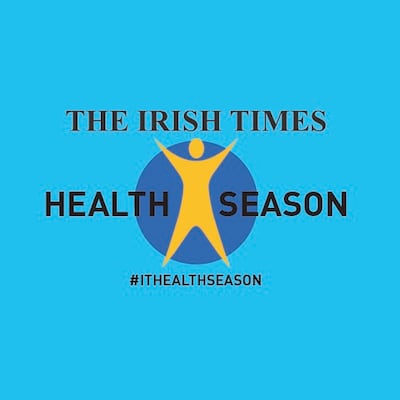Question
Sometimes during a long run I’ll get really bad stomach issues, such as cramping, nausea or a sudden, very urgent need to use the bathroom. What causes this, and what can I do to prevent it?

Answer
For many runners, long or intense bouts of exercise can lead to a range of digestive issues, such as stomach pain, nausea and diarrhoea. While gut issues can happen during many endurance sports, experts say they can be especially problematic for runners and are thought to be caused, in part, by a lack of blood flow to the intestines. Some call it runner’s gut, others refer to it as runner’s belly, runner’s trots or a number of other names.
So what is runner’s gut, exactly? And what can be done to avoid it?
What causes runner’s gut?
During a run, when oxygen is supplied to skeletal muscles, “the blood that is supposed to be flowing to the intestines is actually going to your muscles,” Sam Wu said, an exercise scientist at Swinburne University of Technology in Melbourne, Australia.
READ MORE
This shunting of blood to the muscles can negatively affect digestion, as “you need a lot of blood flow to the gut when you are digesting food,” Dr Lauren Borowski said, a sports medicine physician at NYU Langone Health.
This reduced blood flow, combined with physical jostling, can cause nausea, diarrhoea, cramping or the sudden need to defecate, especially if you are running on a full stomach, Borowski said. Such symptoms can be exacerbated if a person is dehydrated, which reduces the overall volume of blood flowing through the body, or if they have hard-to-digest foods moving through the digestive tract, such as complex carbohydrates, fibre or protein. Without enough blood to aid digestion, the body will pass partially or incompletely digested foods. “Things that are not digested are just flowing through your intestines,” Wu said. “That’s why you have to run to the toilet.”
For long, sustained endurance efforts, such as running a marathon, the shunting of blood away from the intestines can damage the thin layer of epithelial cells lining the intestine, which control what enters the bloodstream. During a long run, a sustained lack of blood flow can cause these cells to detach from each other and burst open, spilling their contents into the bloodstream.
The idea of intestinal damage may sound worrying, but “for most people, that damage is transient,” Kate Edwards said, a doctoral student at the University of Tasmania who researches gastrointestinal symptoms in endurance athletes.
However, Wu noted, it’s likely that this intestinal damage can affect the way nutrients are absorbed during a race, leading to less available energy, or cause general gut discomfort. In a small study published in 2021, researchers from Britain found that runners who collapsed during a marathon tended to have higher blood levels of a marker for intestinal damage than those who did not collapse, suggesting that gut issues may have contributed to their collapse.
As Edwards and her colleagues demonstrated in a separate small study, intestinal damage can be correlated with the intensity of exercise and isn’t specific to running. When compared with runners, cyclists showed similar levels of damage when exercising at similar intensity levels, although they reported fewer overall symptoms of gut discomfort. This damage mostly occurs during high-intensity efforts, Edwards said, when exercisers were working out at 80 per cent of the their bodies’ VO2 max (a measurement of the ability to absorb and use oxygen, loosely tied to effort), compared with when they were working at 60 per cent.
“Anything below a moderate intensity, it’s unlikely you are going to get much damage,” Edwards said.
How to avoid it
Thankfully, there are ways to avoid runner’s gut, Borowski said. When running long distances, such as when training for a marathon, you need to eat enough to fuel your body, but not so much that it causes gut issues, which is tricky. “What to eat and when to eat is really difficult when it comes to marathon training,” she said.
Two to three hours before a run, eat foods that contain simple carbohydrates, like bananas, rather than foods with lots of fibre or complex carbohydrates, such as berries or whole wheat bread.
Training the gut for a long run can be every bit as important as training your legs. Practice what to eat and drink while training, and remember that a race will be more intense than most training runs. Pay special attention to how you feel during training runs done at race pace, rather than just during long, slow runs. On race day, anxiety can also contribute to stomach issues, which is why Borowski advised not putting any extra strain on your gut and to stick with the usual foods you eat before runs, rather than trying something different. It’s also important to stay hydrated.
One recent study of 46 people concluded that compression socks may help, too. In the study, published in the Journal of Strength and Conditioning Research, researchers from Australia looked at the associations between wearing compression socks and intestinal damage during a marathon. Compression socks, which apply pressure to the outermost muscles of the legs, are known to improve circulation.
In the study, those who wore compression socks while running a marathon showed lower levels of a blood marker for intestinal damage than those who did not. Wearing compression socks may not thwart runner’s gut, Wu said, but it is a relatively simple action that may help minimise the effects.
“If we can improve the blood flow and increase circulation to the deeper parts of the body, then we should be able to promote blood flow back into our digestive system,” said Wu, who was one of the study authors. “That can help to decrease or reduce the amount of damage that’s done to our gut during high-intensity exercise.” — This article originally appeared in the New York Times











